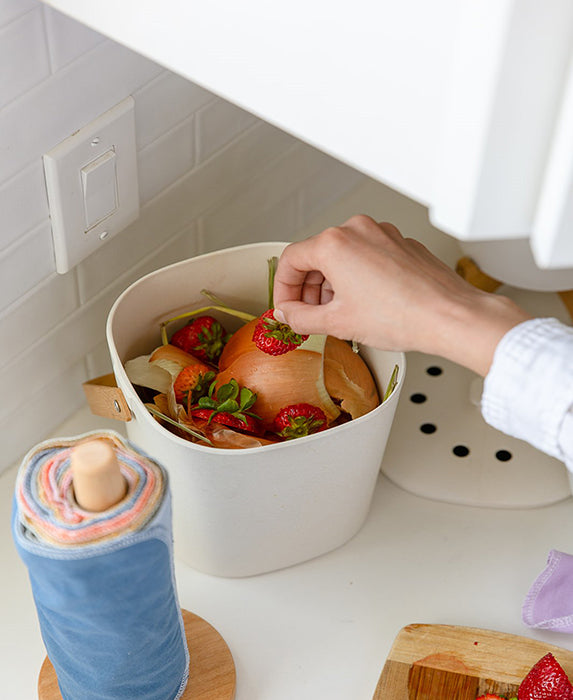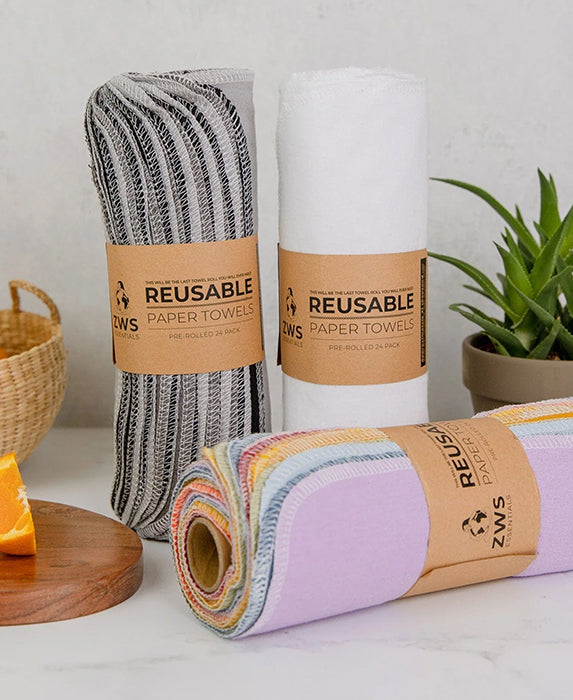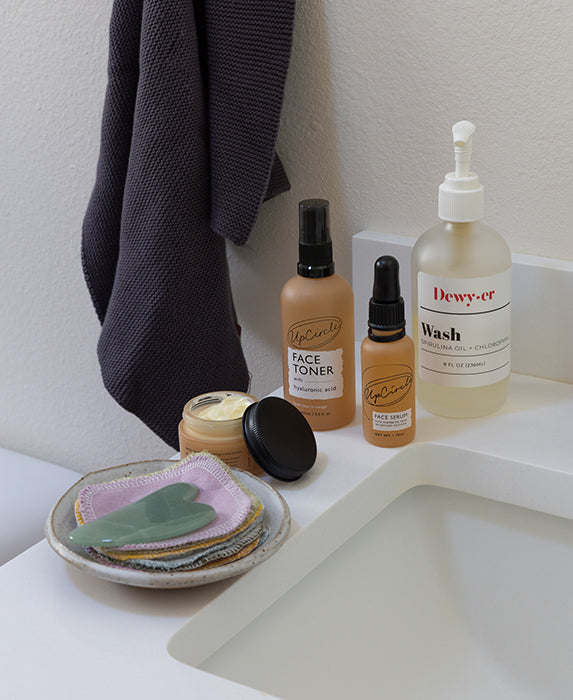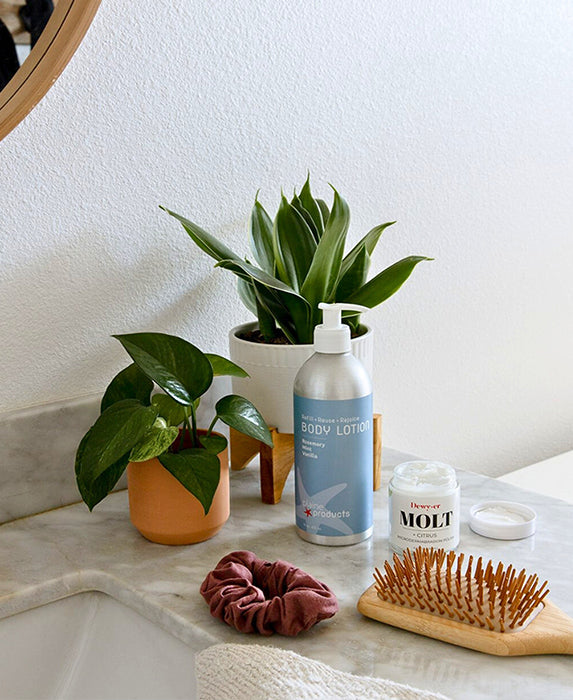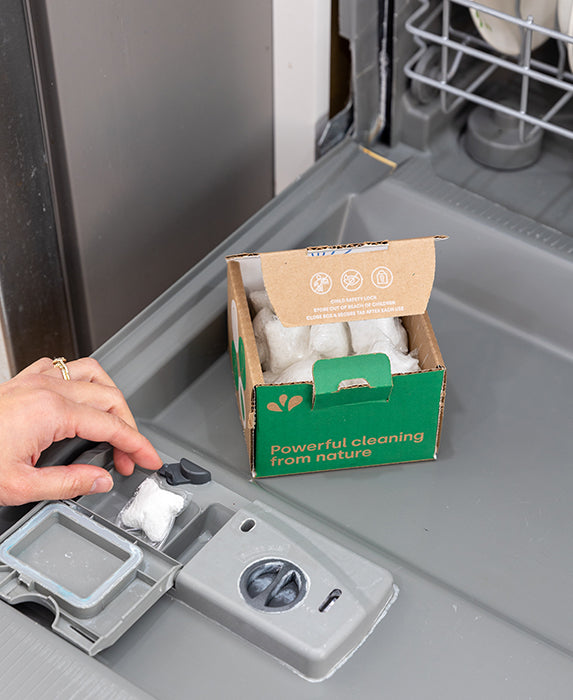Multiple outfit changes, a pile of clothing on the bed, new clothes with rips and tears, and constantly feeling like you have ‘nothing to wear’...sound familiar?
The fashion industry is only getting faster and the pressure to buy new cheaply made clothes intensifies every season. According to the World Economic Forum, clothing production has doubled since 2000.
If, like us, you’re tired of chasing trends, then you’re in the right place. Whether it’s opting for fewer quality items, thrifting to give old pieces a new lease of life, or taking better care of your clothes, there are many ways to adopt a more mindful approach to fashion. In this comprehensive guide, we’ll share all there is to know about sustainable clothing, so you can escape the fast fashion frenzy for good.
Ready?
Contents
- What Is Sustainable Clothing?
- Fast Fashion Vs. Slow Fashion
- How To Choose Sustainable Clothing: 4 Easy Principles
- Sustainable Clothing Brands
- How To Thrift For Second-Hand Clothes
- How To Care For Your Clothes
- Sustainable Clothing: Final Thoughts
What Is Sustainable Clothing?
Sustainable clothing is an umbrella term that refers to garments produced in a way that minimizes environmental impact and follows ethical principles. This could include…
- Second-hand and upcycled clothes
- Items made with sustainable fabrics like hemp, organic cotton, and bamboo
- Factories that implement energy-efficient manufacturing
It can also encompass the way you shop, like choosing fewer higher-quality items and taking a sustainable approach to caring for your clothes to ensure they last longer.
Fast Fashion vs. Slow Fashion

Another term for sustainable clothing is ‘slow fashion’, emphasizing how it’s different from the overproduction and overconsumption in the industry.
Fast Fashion
- Rapid production (there are 52+ micro-seasons for mainstream brands!)
- Cheaply made garments
- Synthetic materials that sit in landfills for up to 200 years
-
Unfair labor and unethical practices
Slow Fashion
- Not dependent on trends
- High-quality investment pieces
- Utilizes repurposed, renewable, and natural materials
- Emphasizes fair trade and ethical production
How To Find Sustainable Clothing: 4 Easy Principles
To make sustainable style simple, here are 4 memorable principles used over the decades that encourage a more mindful approach to shopping:
1. Make Do and Mend
This goes way back to World War 2 Britain, where resources were scarce and people were encouraged to extend the life of their clothing. It involves getting creative and making new items with existing scraps and fabrics, and mending damaged clothes so they last longer.
2. The Wears Challenge
Coined by Eco-Age co-founder Livia Firth in 2015, the 30 Wears Challenge encourages shoppers to ask themselves whether they’d wear a piece a minimum of 30 times before buying. It encourages a slower approach to shopping which aims to reduce the amount of discarded clothes in landfills.
3. Cost-Per-Wear Calculation
Cost-Per-Wear = Number of Wears/ Initial Cost. If fast fashion’s cheap price tag lures you in, this money-savvy sum will help change your mind. It’s a useful tool for making more informed purchasing decisions and considering higher-quality sustainable items.
4. Buy Less, Choose Well, Make it Last
Fashion designer Vivienne Westwood's memorable advice encourages you to be intentional when you shop and treat each item of clothing like a piece of precious jewelry.
Sustainable Clothing Brands
When following West’s wise words - buying less and choosing well - there are two approaches you could take: investing in high-quality items from sustainable clothing brands or thrifting unique second-hand pieces.
Let’s start with the first and shine the spotlight on 10 sustainable brands we have here at Earth Hero:
Cotopaxi

Recycled material outdoor apparel that funds poverty alleviation initiatives.
Terra Thread

Apparel made from Fairtrade Certified Organic Cotton and GOTS Certified dyes.
Maggie’s Organics

Clothing made from organic fibers, committed to fair labor practices.
Girlfriend Collective

A sustainable powerhouse for diverse, size-inclusive, and transparent styles.
Me O My Earth

Gentle organic cotton and eco-friendly clothes for newborns, infants, and toddlers.
Saalt

Sustainable period underwear, to replace the need for single-use pads and tampons.
Boody

Basics made with organic bamboo yarn, designed to feel luxurious on the skin.
Underprotection

Intimates made from upcycled materials, natural fibers, and ocean-bound plastic.
Tentree

An eco-friendly clothing brand that plants a tree for every purchase.
Conscious Steps

Ethically-made socks, that support environmental and social causes.
How To Thrift For Second-Hand Clothes

If you prefer fun and unique items over timeless pieces, thrifting might be the best
approach to sustainability for you. When second-hand shopping, keep these things in mind:
Inspect Items
Check for stains, tears, and wear. Ensure zippers and buttons work.
Try Things On
Sizes vary from brand to brand, and there’s no point in bringing things home that you can’t wear!
Think Creatively
Thrifting is a chance to create your style. Look for pieces that can be altered or repurposed to create something unique to you.
Check All Sections
Don’t shy away from other-gender sections as you might find hidden gems - style is genderless, after all!
Set a Budget
The buy-less approach still stands. Decide how much you’re willing to spend before you go too crazy.
How To Care For Your Clothes
Whether you’ve ordered from a luxury slow fashion brand or you’ve sifted through the baskets at your local thrift store, it’s time to care for your treasures and make them last. Here are 6 crucial steps to take.
Wash your clothes less often
You don’t need to wash most items after every wear unless they’re stained and reducing the amount of loads you do will keep your clothes looking newer for longer.
- Workout clothes: After 1 wear
- Swimsuits: After 1-2 wear
- Shirts and blouses: After 1-2 wears
- Pajamas: After 2-3 wears
- Dress pants or slacks: After 2-3 wears
- Bras: After 3-4 wears
- Suits, blazers, and jackets: After 5-6 wears
- Sweaters: up to 6 wears
-
Fleece jackets or sweaters: After 6-7 wears
Read the laundry care symbols
Reading the laundry symbols will help prevent unnecessary fabric shedding as well as help your clothes last longer.
| |
Do not iron |
|
Do not dry clean |
|
|
Dry clean low heat |
|
|
Dry clean |
|
|
Line dry |
|
|
Machine wash |
|
|
Machine was cold |
|
|
Machine wash hot |
|
|
Do not bleach |
|
|
Handwash |
Opt for a quick cool wash
Most detergents have enzymes that can start to work in temperatures as low as 60F, so there’s no need for a long steamy load!
Use a Micro-fibre Catcher
Add a microfiber-catching laundry ball or bag to help prevent microfibers from breaking off your clothes and to collect the few that do.
Hang your clothes out to dry (when you can!)
This will help the environment, your energy bills, and your clothes last longer (many items aren’t meant to be put in the dryer!). If you do decide to use the dryer, add fabric-softening dryer balls.
Sustainable Clothing: Final Thoughts
From shopping to washing, we hope this guide has encouraged you to take a slower approach to fashion. With memorable principles to guide your approach and the growing number of sustainable clothing brands, slow fashion should start to feel effortless. And if it’s cost or your creativity that’s holding you back, get yourself to the thrift store and see what you can find there!

